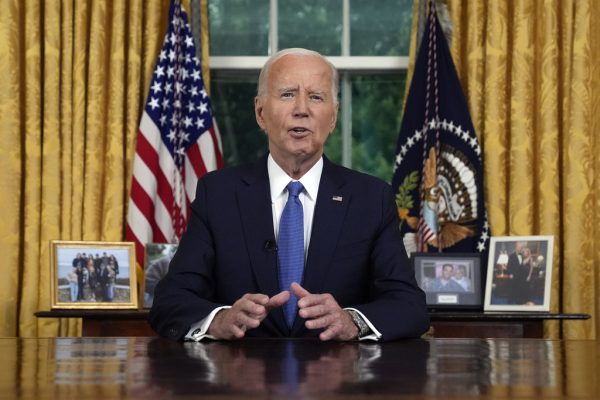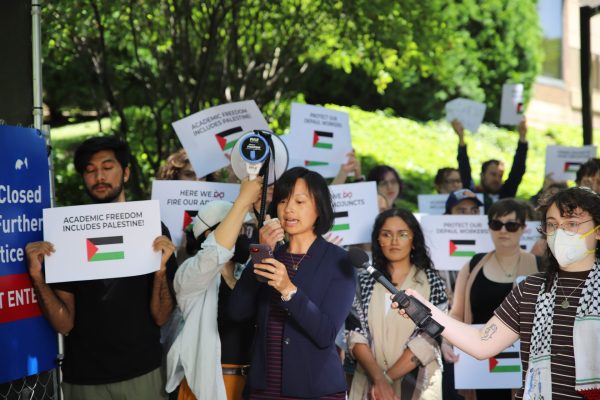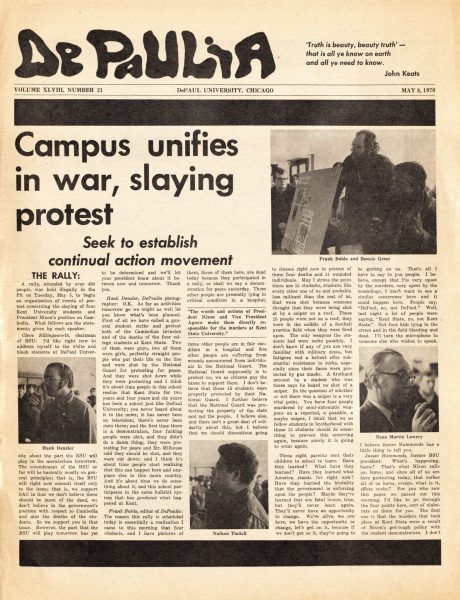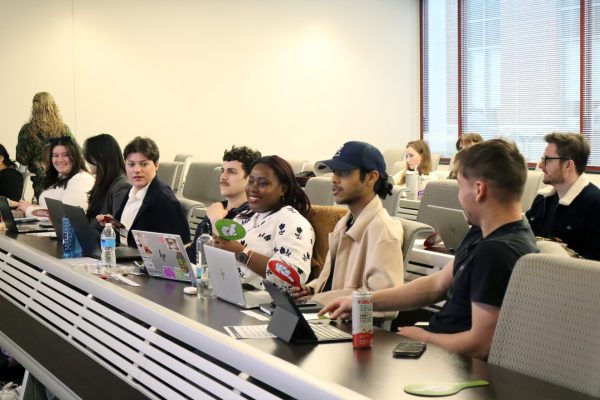Looking back on Chicago colleges’ remote spring semesters
Governor J.B. Pritzker announced the closing of all schools in Illinois, on March 13, as part of the state’s plan to slow the spread of the coronavirus. Illinois schools were initially set to close from March 17 through March 30, but the executive order lasted through the end of the spring semester.
DePaul University announced their plan to close its campus and move to remote learning on March 11 as well. Students and teachers began preparing to use Desire2Learn (D2L) in order to complete courses for the spring quarter. DePaul students attended their classes virtually via Zoom sessions. Microsoft Word and Adobe were provided by the university, free of charge, to help ensure students have the necessary resources to successfully complete the quarter.
Many Chicago universities were ahead of the spread as they began moving to remote learning on March 11. Loyola, Northeastern Illinois, and Chicago State University, along with DePaul University, are a few of the higher learning institutes in the city who were forced to close their doors and move all courses to remote learning for the spring and summer semesters.
According to Loyola University Chicago’s website, the office of online learning has procedures in place to quickly move face-to-face courses to e-learning if the university is faced with an unexpected closure.
The university set up a self-guiding faculty training module, “Just In Time Online,” that guides instructors through the process of quickly putting courses on line so students can easily continue learning. The training module is part of the university’s emergency preparedness efforts. Loyola officially closed their campus on March 20.
LUC moved courses to their learning management system (LMS) called Sakai. Sakai is used by Loyola’s faculty, instructors and students to communicate and learn. Instructors use the platform as an extension for remote learning. Sakai allows students to digitally access their course syllabus, assignments, handouts, video lectures, notes, class discussions, and view their grades and instructor feedback.
The transition from face to face courses to e-learning began happening quickly after Governor Pritker’s executive order closed all Illinois schools. In order to help with the sudden transition, Loyola instructors were offered a variety of options on how to format their courses for remote learning.
Digital documents, handouts and readings were either available in Sakai, emailed to students or on LUC’s digital library course reserves. Instructors had two options for completing lectures.
Some instructors pre-recorded class lectures and uploaded the videos to Sakai using the software Panopto. Other instructors met with students in real time, during the course’s initial meeting day and time, using Zoom. Class discussions were held in real time using either Zoom, the forums section in Sakai or a pre-recorded VoiceThread uploaded to Sakai.
The university urged instructors to stay in close communication with students during these trying times. Instructors had the option of communicating with students in Sakai, via a student’s personal email or a scheduled telephone phone call. Instructors were also required to be available for virtual office hours using Zoom.
Northeastern Illinois University extended spring break for an extra week to give instructors time to fully transition to e-learning.
“The university attempted a blanket transition to remote instruction but, like many other universities, found itself ill-prepared to immediately abandon in-person learning,” said Matthew Rago, editor-in-chief of the Northeastern student newspaper, The Independent. “Northeastern Illinois University instead ended up implementing a clumsy amalgamation between online classes and a series of homework assignments where students taught themselves.”
NEIU online courses officially began on March 30. Instructors used D2L, the same learning management system used by DePaul University, to distribute online course materials such as assignments, readings, lectures, lab activities and communication.
During the transition, the university stressed the need for instructors to have frequent contact with students due to the difficult circumstances. Instructors were told to take into consideration the students who do not have access to the internet or fast internet connection.
Many students may only have access to their mobile devices if they experience a crisis during the pandemic, therefore instructors were suggested to make all D2L course material mobile friendly. University officials requested that instructors be ready to allow extensions on assignments and to be flexible where they can.
Lectures were either pre-recorded and uploaded to D2L or live using the virtual classroom feature in D2L. The university suggested several options to instructors to help with setting up virtual lab activities; for example, video demonstrations of techniques, online simulations, analysis of data, other pre or post-lab work, virtual dissection, night sky apps, video demonstrations of labs, or simulations.
According to NEIU’s website, university officials feel online quizzes are needed to help keep students engaged and test their knowledge of the course material, but are suggested to be short and open book.
NEIU modified grading policy amid COVID-19 has given eligible students the option to choose between the traditional letter grading or Pass/No Pass grading system. Once a student opted for the Pass/No Pass system, they are unable to switch back to letter grading during the remainder of the spring and summer 2020 sessions.
Many students are not happy with the transition and are having a hard time coping with non-face to face learning. According to Rago, “Students are essentially being graded on their ability to educate themselves.”
“I personally don’t like online classes, I prefer in class sessions because I like the idea of talking in person, and my classes require a lot of hands on interactions,” stated Marsha Johnson, a graduate student at Chicago State University.
According to Alvin Daniels, a professor in the communications department at Chicago State University, “It has been difficult for most students especially since it was so abrupt.”
Chicago State University officially transitioned courses to their online server called Moodle on March 30 after students returned from spring break. Moodle gives students access to syllabus, handouts, assignments, quizzes and other course materials.
Instructors were required to revise their curriculum the best way they could for the remainder of the spring semester.
“We couldn’t finish our final project as planned because we needed the software ArcGIS to complete the assignment and some students did not have the software on his or her personal computer, so the professor assigned a written assignment for us to complete the semester out,” Johnson said.
CSU instructed professors to prepare take home exams and/or assignments for students who could not complete course material online to ensure all students had access to course material to complete the semester.
Students who have access to materials for e-learning are expected to attend video calls during their regular class meeting day and time using the software, Big Blue Button or GoToMeeting. During the spring semester, assignments were given out weekly via Moodle and set to be completed by the end of the week.
CSU’s Spring semester came to an end on May 8, but students had the option to move to the Pass/No Pass grading system before the semester ended.
Higher learning institutes in Chicago have extended remote learning through the summer 2020 semester as the governor still has not lifted the stay at home order. Many universities are already planning to continue e-learning for the fall 2020 semester as a safety precaution.
Universities who are considering in-person courses are planning to limit the amount of courses that will take place on campus.











